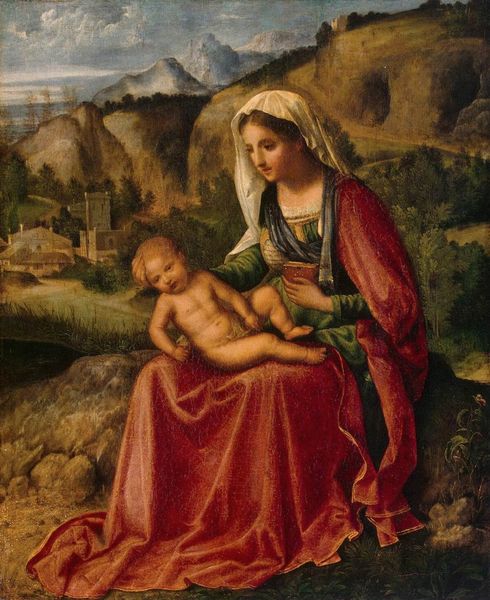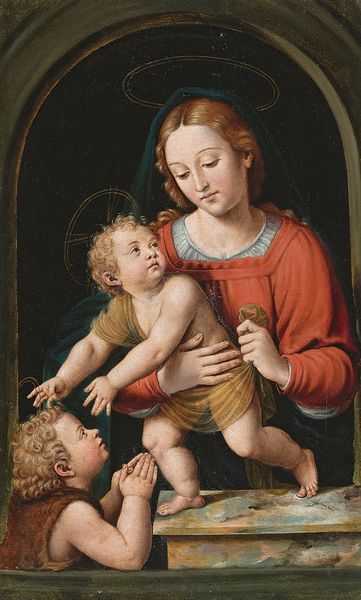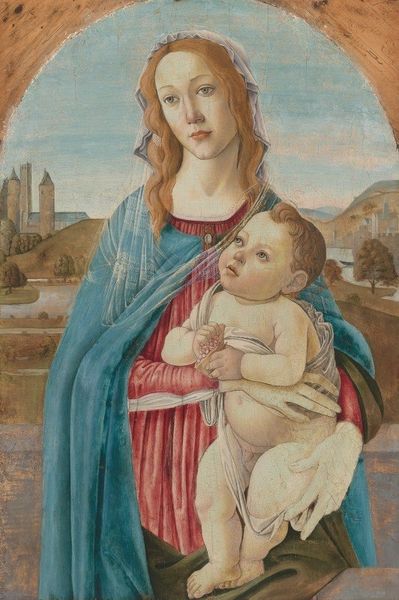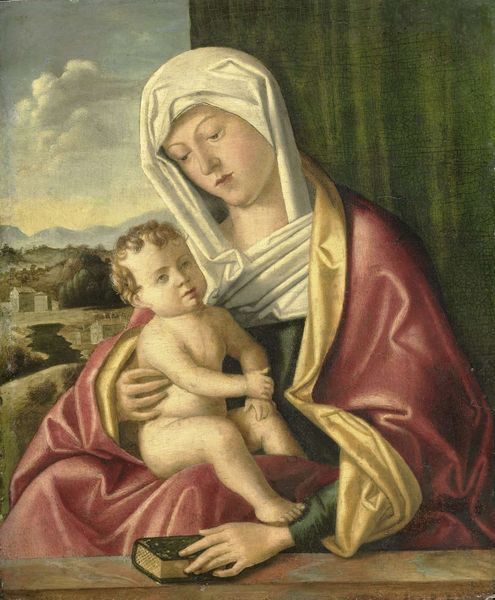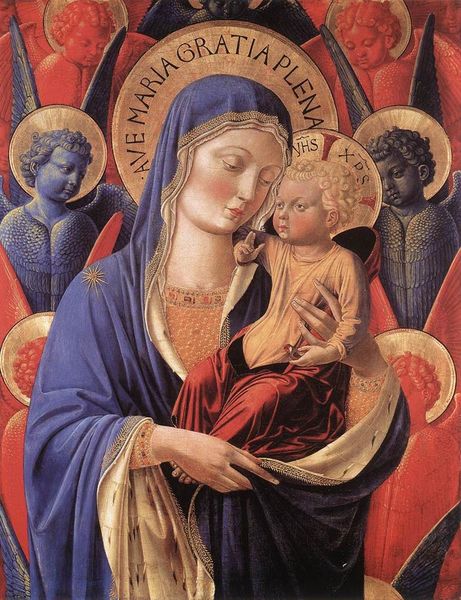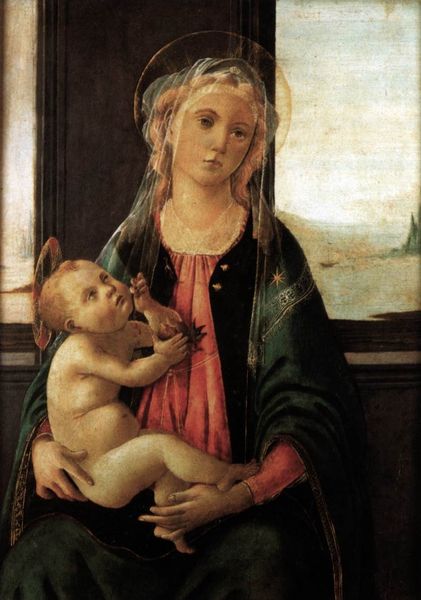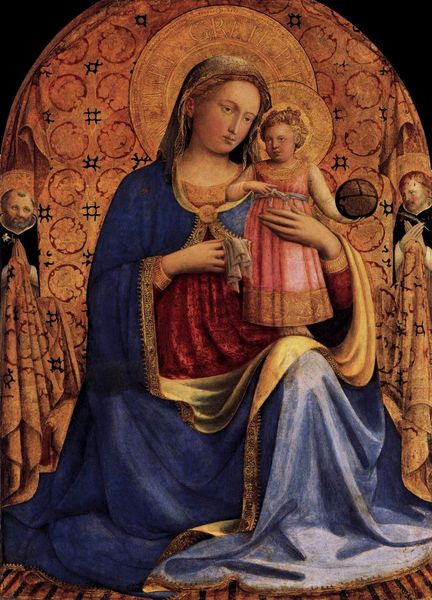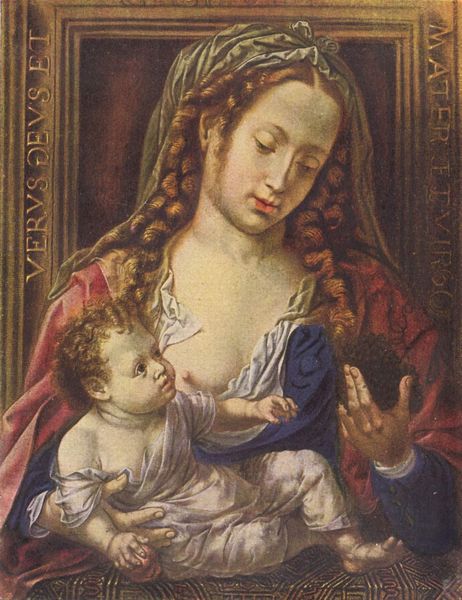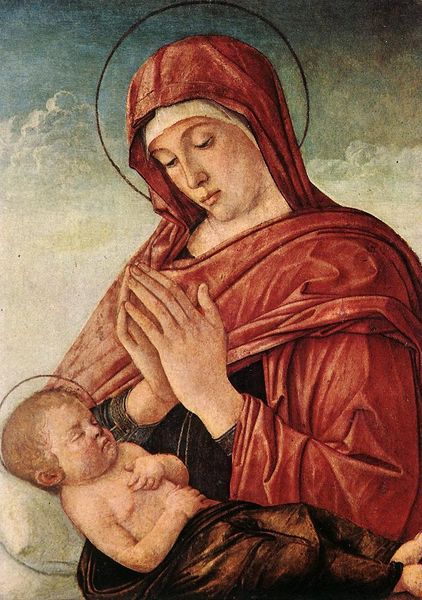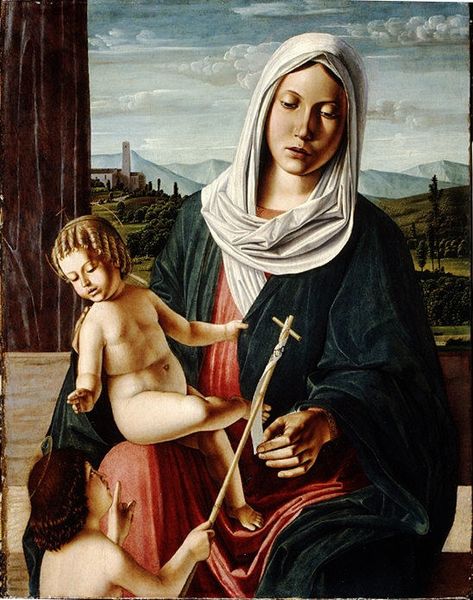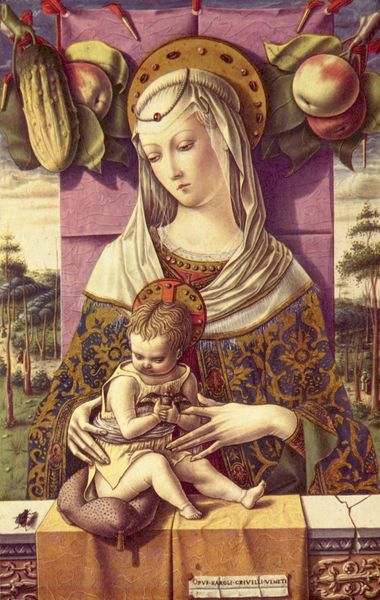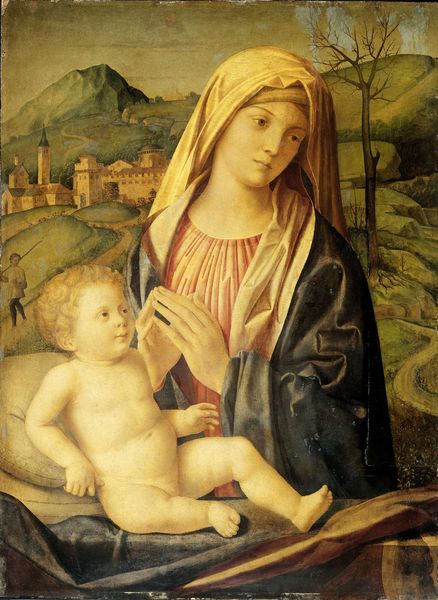
painting, oil-paint
#
portrait
#
painting
#
oil-paint
#
sculpture
#
landscape
#
painted
#
figuration
#
oil painting
#
child
#
academic-art
#
italian-renaissance
#
mixed media
Copyright: Public domain
Editor: So, this is *Adoration of the Child*, sometimes called *The Ruskin Madonna*, painted in oil, likely sometime in the late 15th century and attributed to Andrea del Verrocchio. There’s such a calm, almost melancholic feeling about it, even with the baby Jesus right there. How do you interpret this work? Curator: I'm struck by the layered symbolism, even contradiction, within this image. Notice how the Virgin kneels before a crumbling, classical ruin. This juxtaposition speaks volumes. The ruin represents the pre-Christian world, classical learning in decay perhaps, now superseded by the new faith embodied in the Christ Child. Does the setting change how you understand the work? Editor: I hadn't thought of it like that. I was so focused on the Madonna and Child themselves, but that ruin…it makes it more about a transition, a before and after. Is the landscape symbolic too? Curator: Indeed. Landscapes are rarely mere decoration. Consider its hazy, dreamlike quality. It echoes a psychological space as much as a physical one. It also reminds us of the importance of *landscape* as an idea, often used to imply emotional states. Think about the cultural memory embedded within the classical architecture as opposed to the 'virgin' landscape of the background. The ruin suggests loss, but also the fertile ground for rebirth. It is not merely decay, is it? Editor: It’s amazing how much the background tells us – almost another layer to the story of the image! I see now how the artist’s use of ruin is more than an element in the composition, but carries cultural information about the relationship between antiquity and the new Christian era. Thank you for revealing the depths and layers embedded within. Curator: It's precisely these layered meanings, continuously reinterpreted, that give images their enduring power. The cultural continuity they evoke resonates even across centuries.
Comments
No comments
Be the first to comment and join the conversation on the ultimate creative platform.
